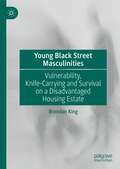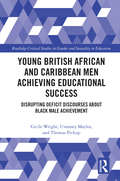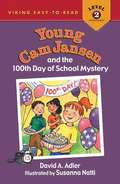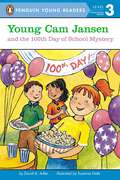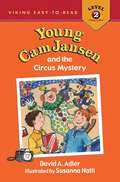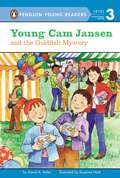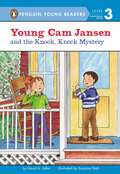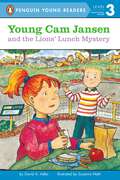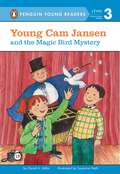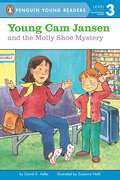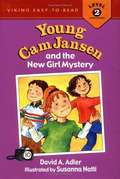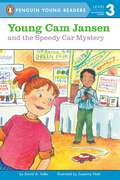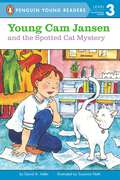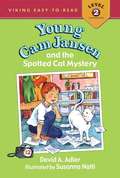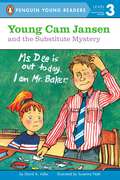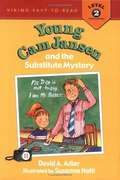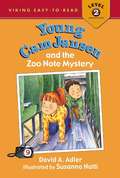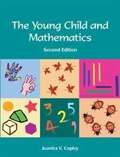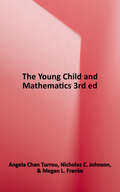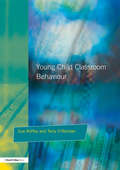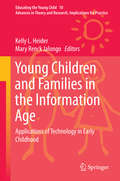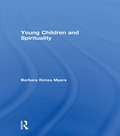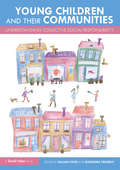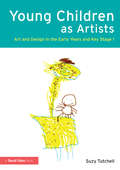- Table View
- List View
Young Black Street Masculinities: Vulnerability, Knife-Carrying and Survival on a Disadvantaged Housing Estate
by Brendan KingThis book describes how young Black men on a disadvantaged housing estate in London navigate the estate’s expectations for their behaviour as they operate within a street code that endorses violence, knife-carrying and challenging masculinity. This street code informs the men’s masculine identities by promoting values of misogyny, violence and the possession of expensive material objects while subduing any performance or features deemed as weak or feminine. Chapters detail the daily pressure on young men to gain respect and perform the estate’s street code while also providing examples of young men who have escaped or rejected its influence. King also outlines how youth workers can support those trapped by the estate’s street code by embodying personalised or caring masculinity features that seek to transform the dominant masculinity.
Young British African and Caribbean Men Achieving Educational Success: Disrupting Deficit Discourses about Black Male Achievement (Routledge Critical Studies in Gender and Sexuality in Education)
by Cecile Wright Uvanney Maylor Thomas PickupIn contrast to research that focuses on the underperformance of young Black males in the British education system, the dominant notion of this volume is educational success. By aiming to understand how young, Black—notably African and Caribbean—male education plays out in different educational spaces, this book provides new insights around intersections between, and across, different structural forces and educational contexts. Examining the political, cultural, and structural factors that shape the educational journey of young Black men in the British education system, the book will cover topics such as: Race, gender, and class, and the attainment gap Contextualising Black men’s educational narratives The role of family and parenting in achieving success The role of community resource in achieving success Young British African and Caribbean Men Achieving Educational Success will be of interest to researchers, academics, and postgraduate students in the fields of multicultural education and gender and sexuality in education, as well as educators concerned with how Black male masculinities play out in educational discourses. Cecile Wright is Professor in the School of Sociology and Social Work, University of Nottingham, UK. Uvanney Maylor is Professor of Education in the Institute for Research in Education, at the University of Bedfordshire, UK. Thomas Pickup is a Principal Policy and Project Officer in local government in the UK.
Young Cam Jansen and the 100th Day of School Mystery (Young Cam Jansen #15)
by David A. AdlerIt's Cam Jansen's first day of fifth grade and she and her friend Eric can't wait to meet their new teacher. But the first day turns out to be way more exciting than they expected when the teacher gets hauled away by the police. <P><P><i> Lexile Levels: 210-450</i>
Young Cam Jansen and the 100th Day of School Mystery (Young Cam Jansen #15)
by David A. AdlerCam Jansen and her best friend, Eric, are excited about their class's 100th day of school party! To celebrate, they're having snacks that start with the letter P: pretzels, popcorn, pineapple juice, and everybody's favorite, pizza. But when the pizza disappears from the kitchen, it's up to Cam and her photographic memory to "click" and solve this delicious mystery!
Young Cam Jansen and the Circus Mystery (Young Cam Jansen #17)
by David A. AdlerCam and her friend Eric are having a great time at the circus with Aunt Molly - that is, until their box of popcorn goes missing. Did they lose it, or was it stolen? It's up to Cam and her photographic memory to figure it out!
Young Cam Jansen and the Goldfish Mystery (Young Cam Jansen #19)
by David A. AdlerCam, her best friend, Eric, and her aunt Molly win two goldfish at the local fair. When the goldfish go missing, Cam must use her amazing photographic memory to solve the mystery.
Young Cam Jansen and the Knock, Knock Mystery (Young Cam Jansen #20)
by David A. AdlerCam, her best friend Eric, and Eric&’s mom are spending the day with Eric&’s grandparents. But Grandpa and Grandma seem too tired to visit. Every so often, a knock at the door wakes them up. But when they go to answer, no one is there. Is a Knock, Knock Ghost on the loose? It&’s up to Cam to solve the mystery!Garden State Children&’s Book Award 2017 Nominee.
Young Cam Jansen and the Lions' Lunch Mystery (Young Cam Jansen #13)
by David A. AdlerA field trip to the zoo is fun for Cam Jansen and her classmates—until lunchtime. Everyone else’s sandwich is safely delivered, but Danny can’t find his anywhere! Only Cam and her amazing memory can crack this mystery.
Young Cam Jansen and the Magic Bird Mystery (Young Cam Jansen #18)
by David A. AdlerIt's up to Cam to solve this disappearing act! Aunt Molly takes Cam and her friend Eric to see a magic show at Teddy's Toys. During the show, Teddy's bird, Oscar, disappears! Where could he have gone? It's up to Cam to click! and find Oscar before he gets lost in the mall in this Level 3 easy-to-read mystery.
Young Cam Jansen and the Molly Shoe Mystery (Young Cam Jansen #14)
by David A. AdlerAunt Molly is in town. Cam Jansen and her best friend, Eric, are at the airport to greet her. They find Aunt Molly, but her favorite high heels are missing! Did she leave them in Peru, or China, or behind a trash can? Will gumshoe Cam find Aunt Molly?s missing shoes?
Young Cam Jansen and the New Girl Mystery (Young Cam Jansen #10)
by David A. Adler<P>There's a new girl in school! Her name's Jenny, and Cam and Eric are happy to befriend her and help her find her way around. But when it's time for gym class, where's Jenny? Which gym did she go to? Is there more than one gym? <P> Young readers won't be able to resist looking for clues in the story to help Cam and Eric find their new classmate. <P><P><i> Lexile Levels: 210-450</i>
Young Cam Jansen and the Speedy Car Mystery (Young Cam Jansen #16)
by David A. AdlerAt her school?s Green Fair, Cam and her friends are learning how to keep the earth green. Everyone is having fun at the exhibits?until a student?s remotecontrolled car goes missing! Was it stolen? It?s up to Cam and her amazing memory to find Speedy.
Young Cam Jansen and the Spotted Cat Mystery (Young Cam Jansen #12)
by David A. AdlerIt&’s a rainy day when Cam and her classmates arrive at school. Meow! A cat with a spot on its tail is napping near the coat rack. How did a cat get in their classroom? Did it run away? Click! Read along as Cam solves this easy-to-read cat caper.
Young Cam Jansen and the Spotted Cat Mystery (Young Cam Jansen #12)
by David A. AdlerWhen a cat appears in their classroom one rainy day, Cam and her friend Eric figure out where it came from. <P><P><i> Lexile Levels: 210-450</i>
Young Cam Jansen and the Substitute Mystery (Young Cam Jansen #11)
by David A. AdlerCam and her classmates have a forgetful substitute teacher. First, he forgot the homework assignment. And where did he put his jacket? But when his car keys and cell phone go missing, everyone starts to wonder: did he lose them or were they stolen? Readers will love to click along with Cam as she solves this latest easy-to-read mystery.
Young Cam Jansen and the Substitute Mystery (Young Cam Jansen #11)
by David A. AdlerCam's photographic memory helps a scatterbrained substitute teacher, especially when he discovers that he has misplaced his coat. <P><P><i> Lexile Levels: 210-450</i>
Young Cam Jansen and the Zoo Note Mystery (Young Cam Jansen #9)
by David A. Adler<P>It's field trip day in Cam and Eric's class. Only where is Eric's permission slip? He had it on the bus, but now it's gone! Did someone take it? Did it blow away? After a few red herrings, Cam's click-click memory kicks in just in time for Eric to join the class on their field trip to the zoo. <P>Perfect for new readers, these Young Cam Jansen Easy-to-Read mysteries feature easy-to-follow storylines, brief sentences, and visual clues within the illustrations, and will introduce readers to feisty Cam, whose adventures can be followed in the Cam Jansen series for transitional readers. <P><P><i> Lexile Levels: 210-450</i>
The Young Child And Mathematics (Second Edition)
by Juanita V. CopleyReflects recent developments in math education using vignettes from classrooms, activity ideas, and strategies for teaching young children about math processes and concepts. Incorporates standards and guidelines from NCTM and NAEYC.
The Young Child and Mathematics, Third Edition
by Angela Chan Turrou Nicholas C. Johnson Megan L. FrankeTap into the Power of Child-Led Math Teaching and Learning Winner of the 2022 Excel Silver Award for Technical Book. Everything a child does has mathematical value—these words are at the heart of this completely revised and updated third edition of The Young Child and Mathematics. Grounded in current research, this classic book focuses on how teachers working with children ages 3 to 6 can find and build on the math inherent in children's ideas in ways that are playful and intentional. This resource - Illustrates through detailed vignettes how math concepts can be explored in planned learning experiences as well as informal spaces - Highlights in-the-moment instructional decision-making and child-teacher interactions that meaningfully and dynamically support children in making math connections - Provides an overview of what children know about counting and operations, spatial relations, measurement and data, and patterns and algebra - Offers examples of informal documentation and assessment approaches that are embedded within classroom practice Deepen your understanding of how math is an integral part of your classroom all day, every day.
Young Children and Classroom Behaviour: Needs,Perspectives and Strategies (Resources For Teachers Ser.)
by Sue Roffey Terry O'ReirdanFirst Published in 2001. Routledge is an imprint of Taylor & Francis, an informa company.
Young Children and Families in the Information Age
by Kelly L. Heider Mary Renck JalongoThis edited book presents the most recent theory, research and practice on information and technology literacy as it relates to the education of young children. Because computers have made it so easy to disseminate information, the amount of available information has grown at an exponential rate, making it impossible for educators to prepare students for the future without teaching them how to be effective information managers and technology users. Although much has been written about information literacy and technology literacy in secondary education, there is very little published research about these literacies in early childhood education. Recently, the National Association for the Education of Young Children and the Fred Rogers Center for Early Learning and Children's Media at Saint Vincent College published a position statement on using technology and interactive media as tools in early childhood programs. This statement recommends more research "to better understand how young children use and learn with technology and interactive media and also to better understand any short- and long-term effects. " Many assume that today's young children are "digital natives" with a great understanding of technology. However, children may know how to operate digital technology but be unaware of its dangers or its value to extend their abilities. This book argues that information and technology literacy include more than just familiarity with the digital environment. They include using technology safely and ethically to demonstrate creativity and innovation; to communicate and collaborate; to conduct research and use information and to think critically, solve problems and make decisions.
Young Children and Spirituality
by Barbara Kimes MyersMaintaining that spiritual development is an integral element in child development, Barbara Kimes Myers provides a framework for the discussion of spirit and spirituality in the lives of children. Through her discussion of the four core conditions of a spirituality of caring, she crosses the borders of various faiths and applies her theories to a variety of practical and professional settings. Through Myers' discussion of the four core conditions of a spirituality of caring, she crosses the borders of various faiths and applies her theories to a variety of practical and professional settings, providing a common language that can be used to talk about the centrality of spirit--that which fuels development and learning. She discusses transcendence, family life, cognition, church and state, fundamentalism and multiculturalism. Her framework emerges from her understanding of the thinking of key child developmental theorists--Vygtosky, Piaget, Erikson, Gardner, Giroux and Noddings.
Young Children and the Environment
by Julie M. DavisYoung Children and the Environment tackles one of the biggest contemporary issues of our times - the changing environment - and demonstrates how early education can contribute to sustainable living. An essential text for students in early childhood education and a practical resource for child care practitioners and primary school teachers, it is designed to promote education for sustainability from birth to 8 years. The text refers to national and international initiatives such as 'Sustainable Schools', 'Child Friendly Cities', and 'Health Promoting Schools' and explores their existing and potential links with early childhood education. Groundbreaking content draws on recent literature in the areas of organisational, educational and cultural change and environmental sustainability. Early childhood case studies and vignettes exemplify leadership in practice, and 'Provocations' are integrated throughout to inspire new ways of thinking about the environment, the wider world, young children and the transformative power of early education.
Young Children and Their Communities: Understanding Collective Social Responsibility
by Gillian Sykes Eleonora TeszenyiBy approaching the concept of community through the lens of early childhood, this valuable book acknowledges the role that diverse and multiple communities play in supporting a child’s early development, and explores how their value can be harnessed in our ever-evolving and fast-changing world. Young Children and Their Communities delves deeper into the many layers of communities to which children belong. With a focus on key theoretical perspectives, such as social empathy and the pedagogy of friendships, the book seeks to expand readers’ understanding of the concept of community by considering a range of both established and emerging communities, including peer groups, digital communities, the extended family and intergenerational learning. Chapters explore how various communities contribute to and enhance young children’s lives, and examine how children can in turn enrich the communities they are part of. Illustrative vignettes and points for reflection are included throughout, along with helpful research summaries and links to current policy. Reiterating the importance of communities and illustrating the rich opportunities they offer to children, Young Children and Their Communities will inform students’ and early years practitioners’ practice as they confront new challenges and opportunities in fields of early childhood education, social work and sociology.
Young Children as Artists: Art and Design in the Early Years and Key Stage 1
by Suzy TutchellFrom the moment a child is born, they interact with the sensory world, looking at colours, feeling textures; constructing mental and physical images of what they see and experience. Within all early years settings and into primary school, the aim for the practitioner, is to provide as many opportunities as possible to stimulate, excite and ignite the visual and tactile imagination of the young children they teach. Young Children as Artists considers how art can be managed, understood and relished as an essential ingredient towards the creative potential of each unique young child. The book focuses, on how to enjoy, celebrate and extend what a young child can do in art and show how engaged adults and the wider school community can become confident participants in the process of early years art making. Full of practical advice, on to how to design, develop, resource and extend art and design environments within the early years setting, the book covers: Developing skills for positive and participative adult interaction and engagement Understanding and analysing child involvement in art Planning for opportunities and responding to observation and schema in art and design Practical suggestions for activities and resources (inside and out) Ideas to explore sensory development and awareness Ways to manage and savour the art transition into KS1 Ways to encourage parental participation and understanding of the art process with their children Opportunities to engage with practising artists This book will help to invigorate the art experiences offered in your early years setting by considering what is accessible, individual, inspiring and meaningful for young children and how you can best support their formative paths of enquiry.
